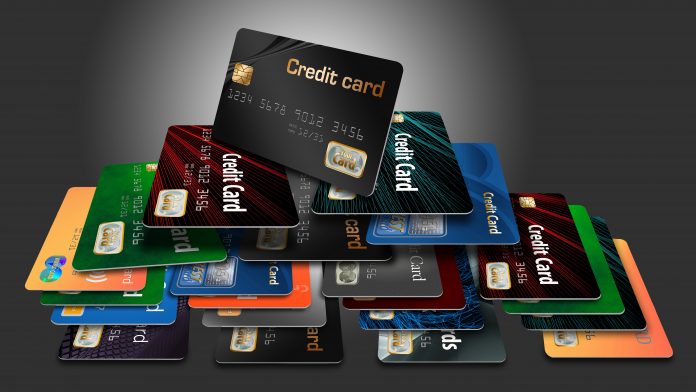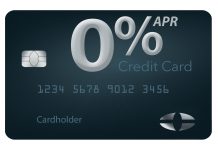If you’ve recently opened your first credit card account and received your first card, it’s likely that you have a lot of questions big and small about the best way to handle your newfound credit. In this article, How do Credit Cards Work? A Beginner’s Guide, you’ll learn about how credit cards work, the terms, fees and restrictions you’ll encounter, and also how to find the best credit cards for your needs.
The Basics
A credit card has no actual value but the line of credit attached to it does. For example, 2 bank customers might have a Visa credit card from the same bank but customer #1 has a $5000.00 credit line while customer #2 only has $1000.00. That means customer #1 has the ability to purchase up to $5000.00 worth of goods and services, or $4000.00 more than customer #2.
A bigger line of credit means stronger buying power for the customer who holds it, with the caveat that both need to pay their cards off at a later date. The key is to use your credit card responsibly because, if you do, paying it back on time and spending responsibly, most banks will continuously increase your credit line as time goes by.
The Most Widely Used Credit Card Terms and Their Explanation
There are more than a few terms connected to using credit cards and knowing what they mean can help you to use your credit card much more responsibly. How do credit cards work? A good suggestion is to study these terms and, if you have questions about them, ask your banker for help. Those terms, in alphabetical order, include;
Annual Fee
If your credit card has an Annual Fee you’ll pay that fee every year at the same time. Some cards charge higher fees than others, Also, some credit cards don’t charge this fee at all, so it’s best to check first before opening any credit card.
APR
APR stands for Annual Percentage Rate, which is the rate of interest that you’ll pay on all of the purchases you make using that credit card. or example, if your bank charges an annual percentage rate of 20% simply divide that number by 12 months and you’ll find the monthly percentage rate (in this case, 1.7%).
NOTE: If you miss a payment(s) your APR usually will increase significantly.
NOTE: If you pay your credit card off completely every month, you won’t pay any interest.
AutoPayment
If you worry that you’ll forget to pay your credit card bill on time, most cards allow you to set up an auto- pay feature that will withdraw money automatically from a savings or checking account to pay your credit card bill for you, on time, each month.
NOTE: If you’re forgetful this can be a godsend and will save you money, stress and headaches.
Balance Transfer / Balance Transfer Fee
Some credit cards allow you to transfer the balance from another card or account to your new credit card. When they do, they will usually (but not always) charge a fee for the transaction, otherwise known as a balance transfer fee.
NOTE: Some credit cards will allow you to transfer funds for no charge as an introductory bonus, but just the one time.
Cash Advance / Cash Advance Fee
If you have a credit card with a $1000.00 line of credit and you withdraw $200.00 in cash from your bank using that card, that’s called a cash advance. As with most services attached to credit cards, there is usually a cash advance fee you need to pay but, at some banks, that fee is waived or nonexistent. Also, some credit cards and banks charge higher fees than others so do your due diligence to see which one is the lowest.
Credit Limit
This is basically the maximum amount of credit you can charge using a specific credit card. If your credit card has $10,000 in credit that’s your maximum. Any purchases you try to make over that limit and your card will be declined.
Foreign Transaction Fee
If you travel outside of the United States and make a purchase anywhere else in the world you will likely get charged a foreign transaction fee. Not all cards charge this but those that do usually charge between 2% and 4% of the total purchase.
Fraud Alerts
Many credit cards today allow you to set up specific alerts based on purchases, balances and more so that, if you’re near your spending limit, for example, or your card has been stolen and is being used, you’ll get notified right away and can make an effort to close the card down.
Introductory Period
An ‘introductory period’, if offered, is a time period where you can keep a balance on your credit card and the card won’t be charged interest during that time. This usually lasts up to 6 months although you don’t see it offered very frequently for obvious reasons.
Late Payment Fee
Paying late not only can damage your credit if done too often but, every time, you’ll be charged a late payment fee. This fee is typically $30.00 or more and so is something you want to try very hard to avoid.
Penalty APR
If you pay your credit card bill late you will not only incur a fee (see above) but also your APR could increase, which is known as a penalty APR. The penalty APR can be quite high in some cases and can last for a few months or indefinitely so, again, try very hard not to pay your credit card bills late.
Returned Payment Fee
Like a late payment fee, a returned payment fee can cost $30.00 or more and damage your credit. It’s assessed when you make a payment and, for whatever reason, that payment isn’t approved, so make sure you know what your credit card balance is whenever you make a new purchase using it.
Rewards Program
Cash-back, frequent flier miles and extra points that you can use towards future purchases are all rewards that credit card issuers use to convince you to get and use their cards. Some can be quite attractive indeed, so check the details when you apply.
Sign-Up Bonus
When you sign up for a credit card the card company will oftentimes offer a bonus based on spending a specific amount of money. These can be excellent so make sure to check the details so you don’t miss out.
How To Choose the Best Credit Cards
Here’s a fact; there are many different credit cards available and all of them have different fees, rewards and more. The best way to choose the best credit cards for your needs is to first define what those needs are. For example, some credit cards are better than others for building up your credit and credit score, while others may offer excellent value in terms of cash-back, lower APRs and other incentives.
Fill Out a Pre-Qualification Form
One way to choose the best credit card for you and your family is simply to fill out a Pre-Qualification form that most credit card companies will offer. When you do, a ‘soft pull’ will be made as the card checks your history to see if, and what, credit cards you’re qualified to get.
The beauty of pre-qualification is that it does not affect your credit score but it does show which cards will say ‘yes’, allowing you to do more shopping around, so to speak, and pick the best cards with the best features and benefits.
Read All Terms and Conditions Closely
Be honest, when was the last time you ‘read the fine print’ when you made a large purchase? Like most you probably never have but, with a new credit card, you really should. Rates, fees, penalties and bonuses vary from card to card, sometimes significantly, and not knowing what they are, and how they can affect you, is not a good idea.
Best Practices for Being a Responsible Credit Card Holder
Congratulations, you’ve received your first credit card! Now the biggest challenge you have is to use your new card responsibly, which frankly can be difficult for many. The truth is, having a great credit score is important in today’s world for many reasons and, to keep your score as high as possible, you need to be diligent, thoughtful and responsible when using any and all credit cards you own. That includes;
- Paying your credit card bill on time every month
- Paying your balance in full whenever possible (This will save you a lot of money in the long run!)
- Checking your monthly statements often to make sure you know what’s going on with your credit account
- Checking your credit score regularly, which is not only a good habit but also can cause even better credit and monetary habits in the future
- Use the cash advance feature as little as possible due to it’s high associated fees
- Make sure you keep your card secure at all times, especially from thieves but also from family members who might use it impulsively
Keep Your Credit Utilization Rate Low
The amount of credit that you have available at any time over your credit cards (1 or more) is known as the credit utilization rate. For example, let’s say you have $10,000.00 in credit spread out over 3 cards. If you have $2000.00 in outstanding balances on those cards, your credit utilization rate will be 20%. (That’s good!) If, however, you have $8000.00 in credit card balances your credit utilization rate will be 80%. (That’s bad!)
The higher your utilization rate the more risk you pose to a bank or other credit card company, which can negatively affect the amount of further credit you can receive. For that reason, keeping it low at all times is the best choice.
We hope you liked our article, How do Credit Cards Work? A Beginner’s Guide. If you have any questions or want to leave a comment, please do so in the space provided, and best of luck with your new credit card!











